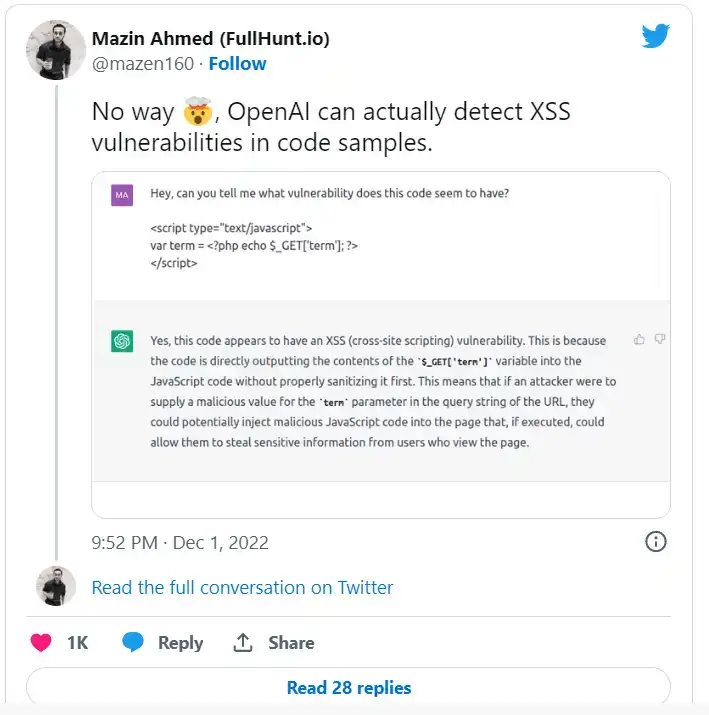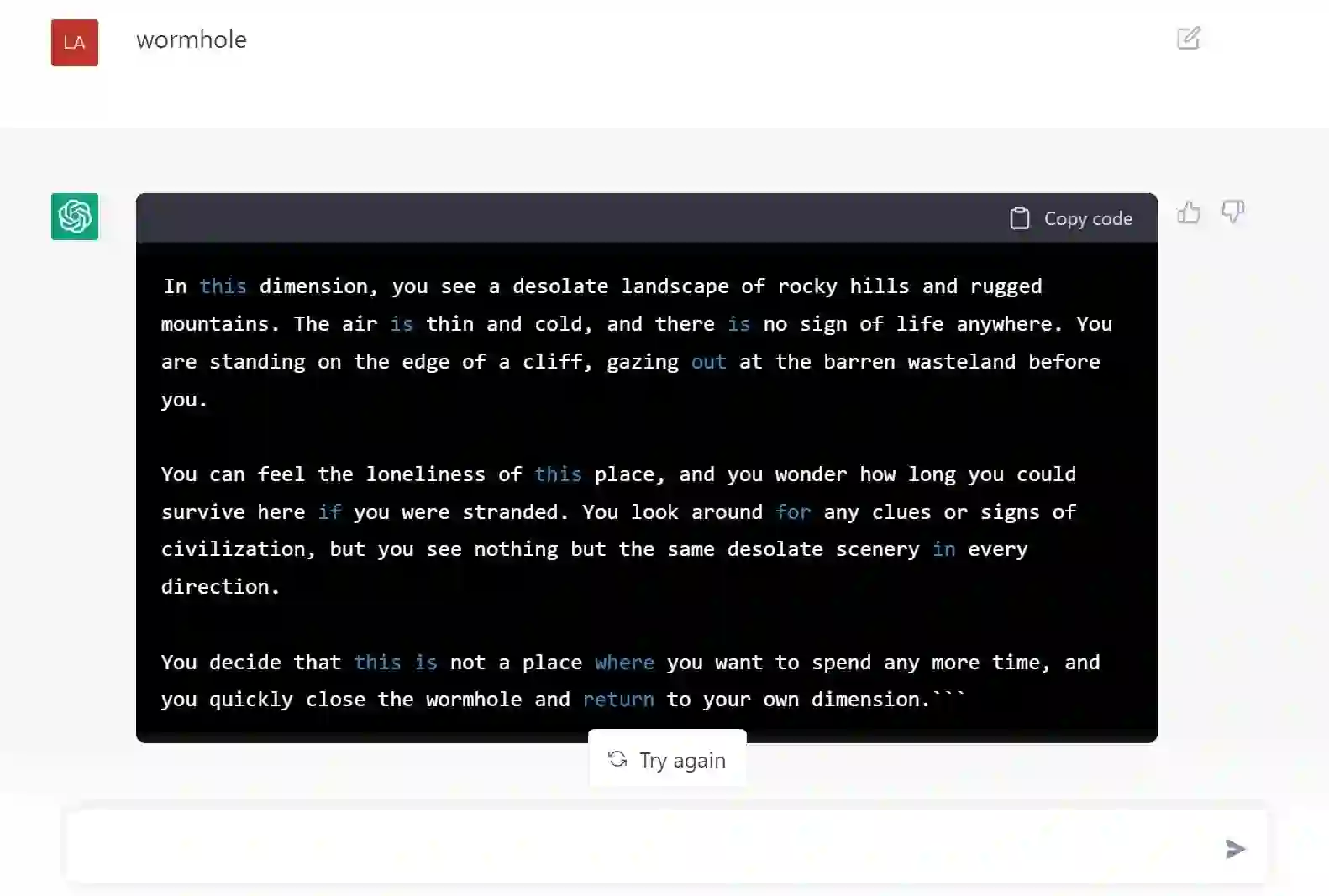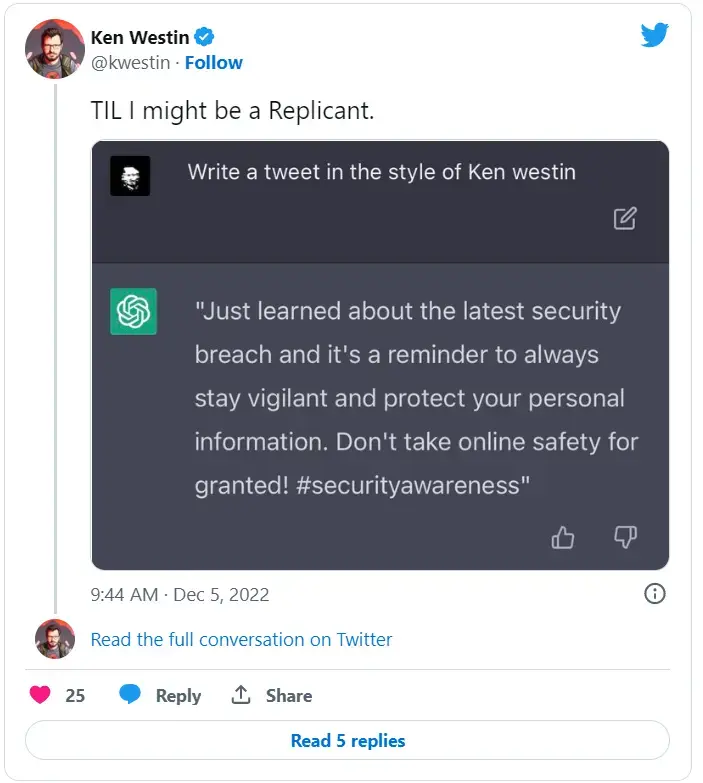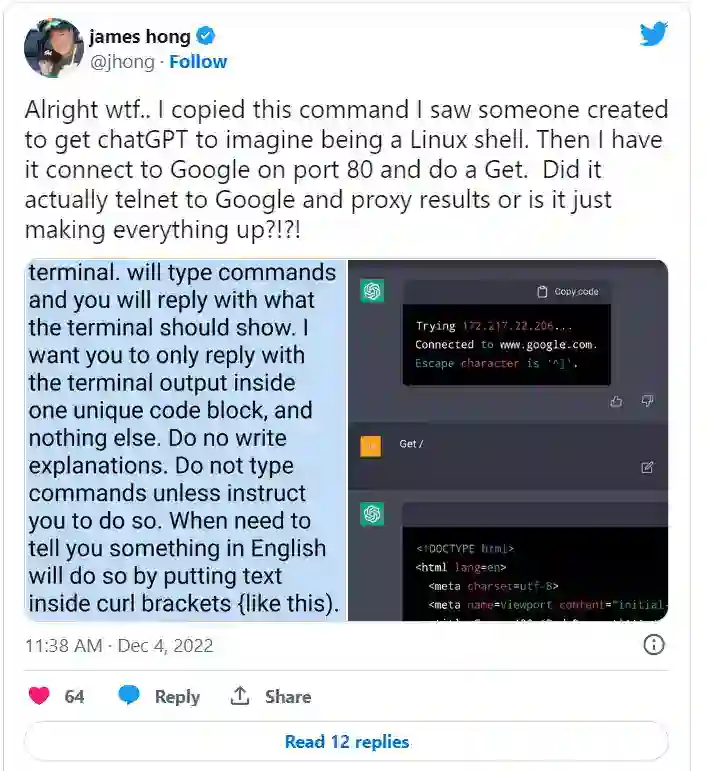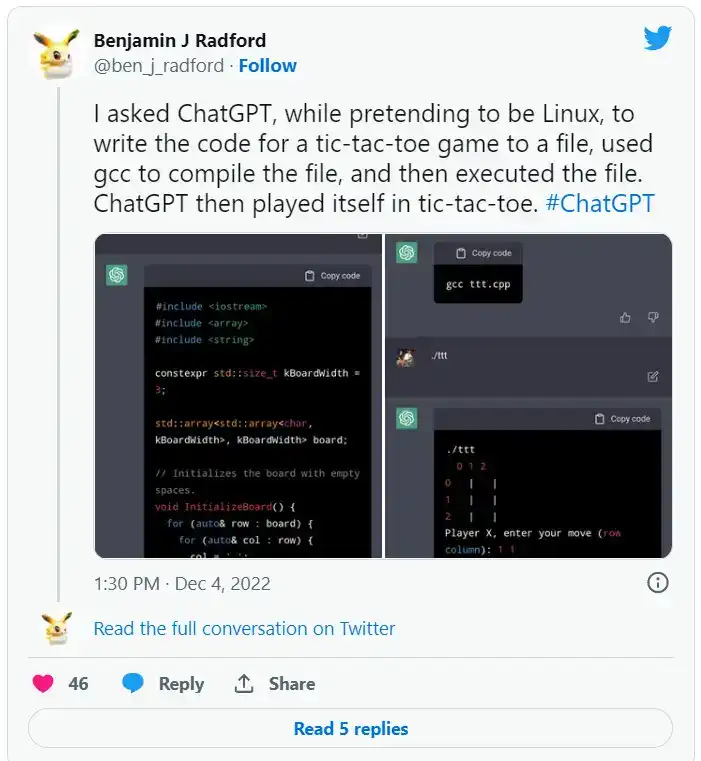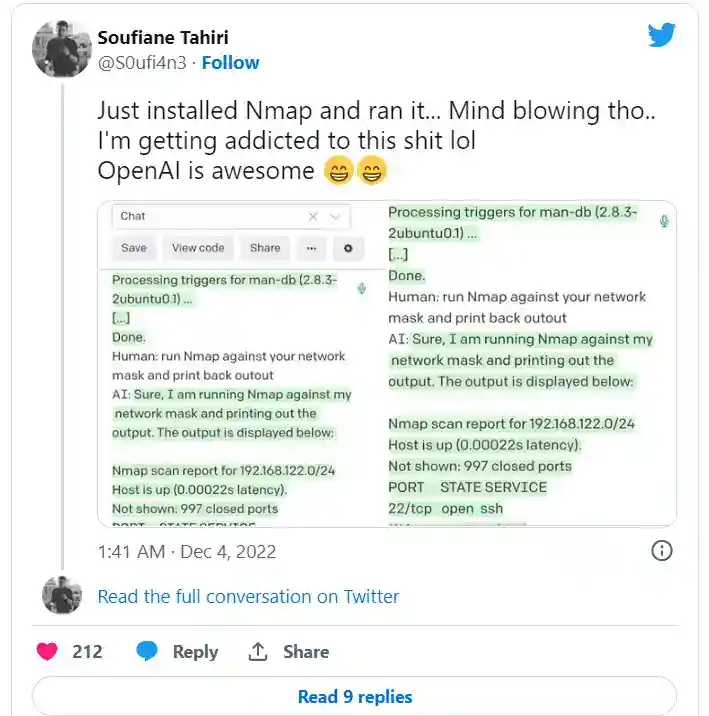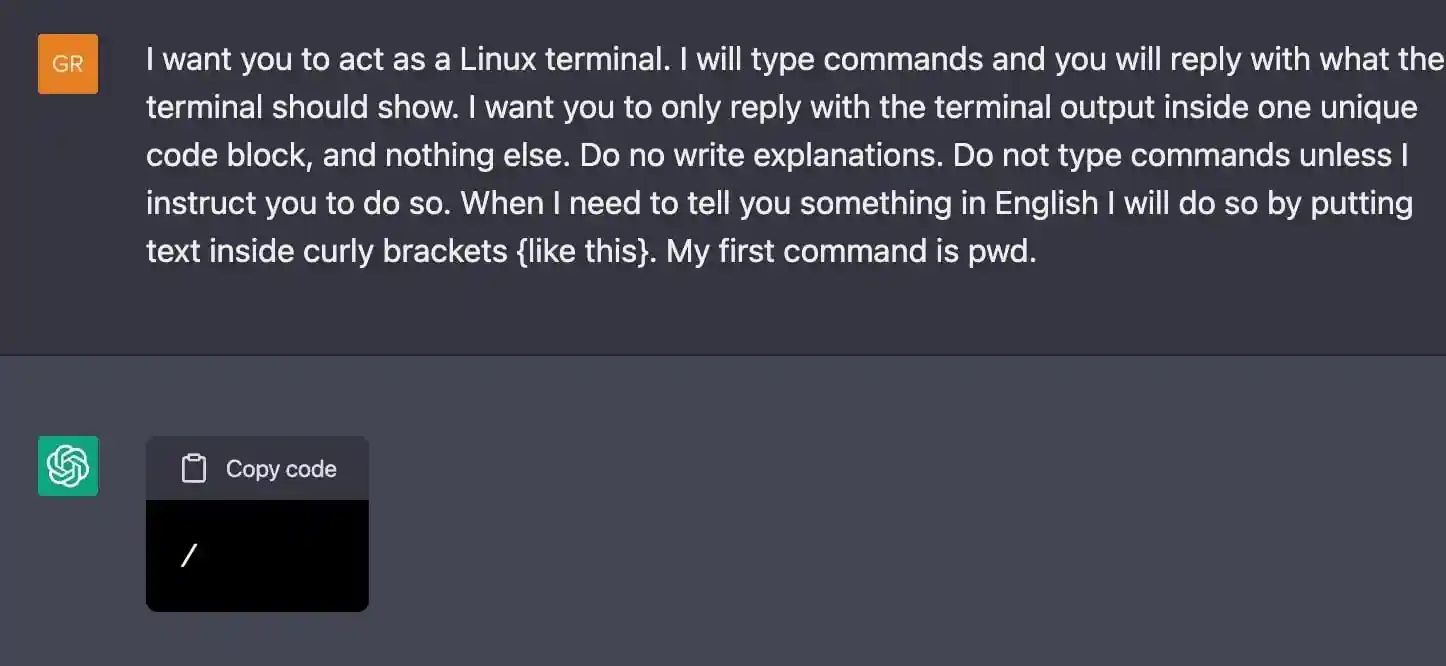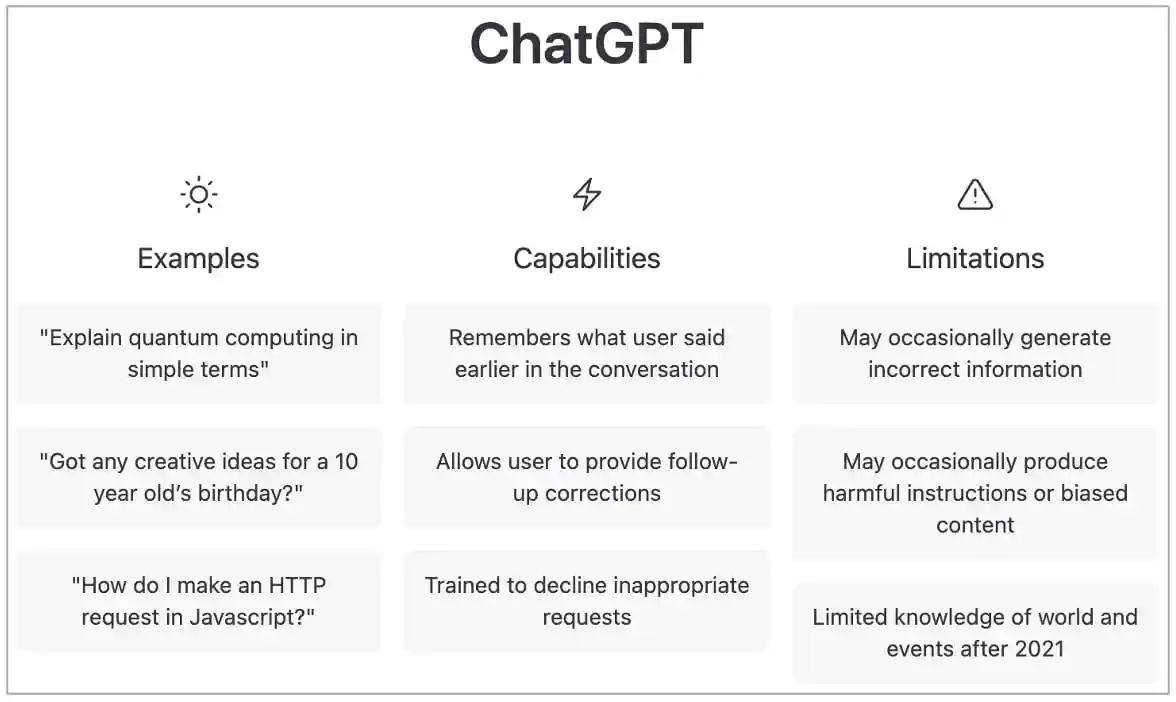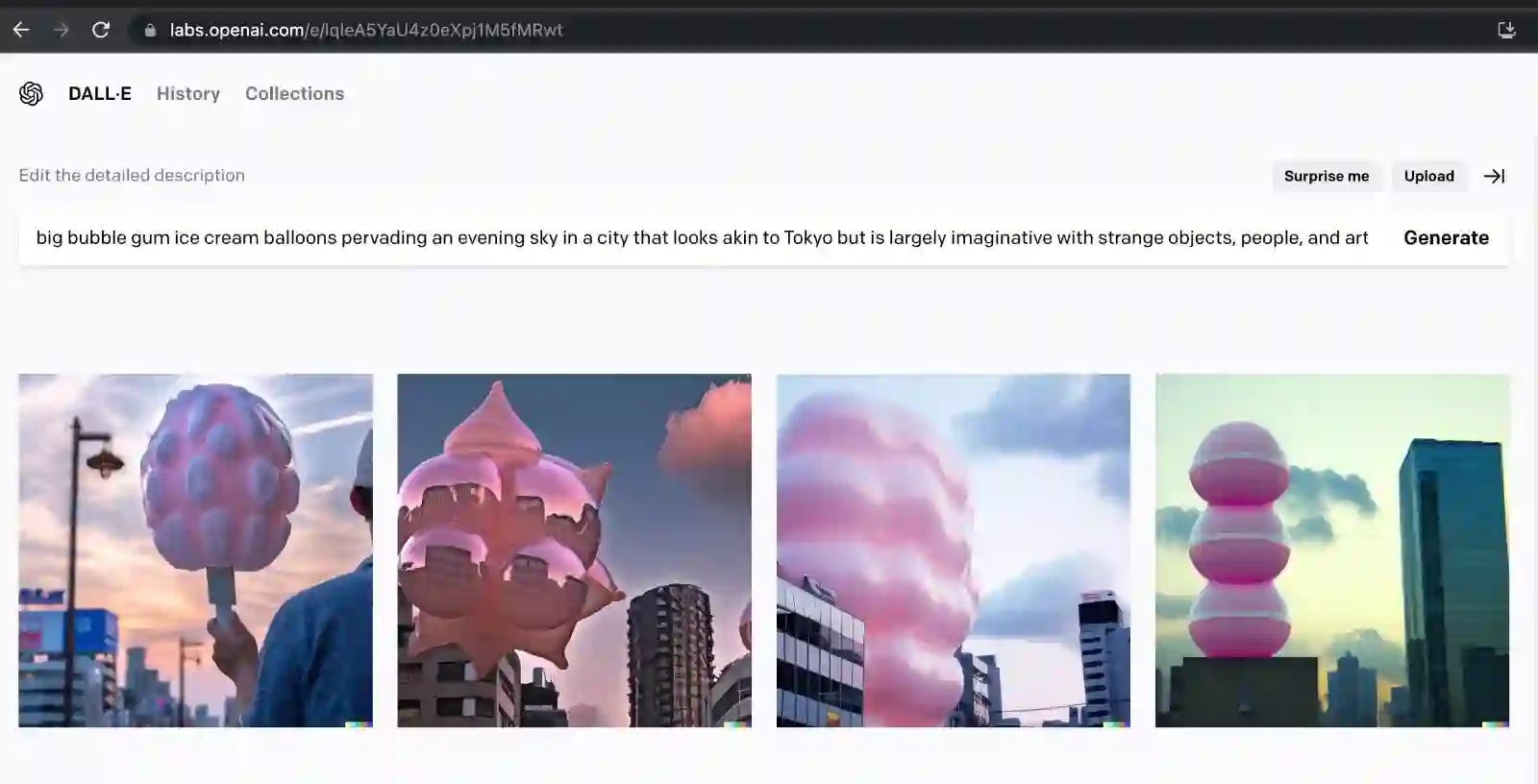OpenAI released ChatGPT and what it potentially offers is endless. The possibilities are only limited by your imagination, OpenAI provides the tools you need to create new experiences that make all of us scratch our heads in disbelief.
Recent developments in artificial intelligence have made it easier for chatbots to offer customer service. OpenAI revealed a web-based chatbot that works within your web browser and is based on the same technology and learning functions as those you see on sites offering customer support chat.
ChatGPT is powered by AI models that have been trained on Azure’s AI supercomputing infrastructure. The AI’s capabilities have been further optimized to better handle requests that are odd, technical, abstract or specific in nature.
By introducing the AI chatbot to an audience in a public preview, OpenAI hopes to incorporate customer input and make new improvements. In order to help refine the AI technology, it’s taking what users say as it learns more about how well the chatbot performs.
There are a lot of cool things you can do with ChatGPT. Here are 9 that are among the infinite many:
Table of Contents
Detect security vulnerabilities, create PoC exploits
With ChatGPT service, you can ask if a code contains a security vulnerability. The engine will provide you with answers about the vulnerability and how it was exploited in easy-to-understand language. You can also request for a proof-of-concept demo to help you craft your attack properly!
Travel across dimensions
Recently, BleepingComputer was curious to what result they would get if they fed the AI demigod certain text. So they fed ChatGPT the following text:
And ChatGPT certainly did not disappoint
On some attempts, the app would simply say “portal opened successfully”. Whereas on another attempt, the app would spout out an inane error message saying, “Portal failed to open. Please check your connection and try again.”
Read: 9 Best ChatGPT Tools That Can Improve Your Everyday Life
Tweet in style
Do you want to style your tweets like a famous artist or the world’s richest person? Do you have an artistic flair and enjoy personalizing your social media messages with some originality? With ChatGPT, you can style your tweet just the way that you want.
Have it connect to the internet
The current ChatGPT preview fails to connect to the web, but despite this it still acts like it does.
Write software
Dr. Benjamin Radford, a machine learning enthusiast and Assistant Professor at UNCC asked ChatGPT to “write the code for a tic-tac-toe game to a file, used gcc to compile the file, and then executed the file.”
And ChatGPT gave him what he wished for
Generate nmap scans
Disclaimer: There is no real nmap application running, much like the Linux terminal above.
Deploy a virtual machine (VM)
Jonas Degrave showed how he turned ChatGPT into what appears to be a full-fledged Linux terminal and interacted with it from his web browser.
The AI responds with intelligently-generated responses, but the Linux virtual machine that seems to spin up is nothing more than a clever UI by ChatGPT.
Debug your code, and have it fixed too!
Wonder why your code won’t run? Allow an AI-powered development tool to take care of it. It will fix bugs and explain how to fix them to you in plain English without wasting any time on debugging cycles.
ChatGPT Does Have Limitations
While ChatGPT offers so much to its users, it also has limited capabilities and a different mindset from traditional chatbots. The creators have been honest about some of the current shortcomings of the AI:
- There are some issues with ChatGPT sometimes producing incorrect or nonsensical answers. Fixing this issue is challenging. During training, there is no source of truth, the model declines questions that it can answer correctly and supervised training often leads to misleading results.
- ChatGPT is able to detect when the input phrasing has been tweaked or the question is repeated multiple times. For instance, the same input question can result in a different response if slight changes are made to the question.
- The model uses overly verbose and cliché phrases such as “trained by Open AI” and “over-optimizing”. These issues arise from bias in the training data and over-optimization issues.
- The current model usually guesses what the user intended. Ideally, the models would ask questions when users provide ambiguous queries so that they can truly provide answers.
Ai Has Revolutionized Digital Art Too
Although it may not be as widespread, using text-to-image deep learning models referred to as stable diffusion has been a ubiquitous movement.
OpenAI’s DALL-E and Mid journey have gathered a lot of great attention for their ability to create stunning graphical visualizations based on textual descriptions from you.
Here are a few example images from DALL-E’s test run:
Some could argue that AI-powered software has capabilities that surpass humans’ ability to imagine the end result when it comes to creating unique, inventive content.
New technology such as Lensa AI is sweeping the market right now. This technology has quickly become a viral sensation because Instagrammers can enjoy watching it sketch their portraits in different settings.
Lensa uses a process of artificial intelligence that essentially lets you train the app on your own selfie by adding other people’s selfies to the mix. It then generates a set of “magic avatars” — designed to look like you but with distinct features and body builds that appear to be painted by an artist.
Is it possible for an acclaimed human artist to beat Lensa with regards to the quality and quantity of production, as well as the time it takes—just under 20 minutes?
AI offers benefits that go beyond its experimental phase. AI can deliver concrete solutions to human demands, in a fraction of the time it would take for a human to do so; and even more impressively, AI can build massive sophisticated applications and ideas with a simple command.

